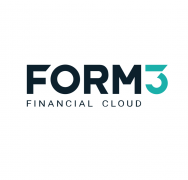Why Payments-as-a-Service is the first choice for FIs
SPONSORED INSIGHTS
More and more financial institutions are choosing to outsource their mission-critical payments infrastructure over building or licensing legacy technology.
The pace of change within the global payments technology space is still at full speed with no sign of slowing down. While traditional incumbents have until recently taken comfort in their size and decades of dominance, new digital-only challenger banks are ramping up and making a huge impact on the global financial landscape.
The reason for this surge? The accessibility of digital banking services has captured the attention of savvy consumers that want a modern banking service that is a quick and convenient option. Similarly, as corporate clients adopt digital capabilities in their operations and business models, they too require convenient, instant access to and real-time movement of funds, without delays or costly charges.

More financial institutions are choosing to outsource their mission-critical payments infrastructure.
What are the incumbents doing to keep up?
Banks are increasing their spend on technology, while balancing their digital strategy with new regulations, such as the Second Payments Directive (PSD2) which is designed to increase competition. Much of these technology investments are directed towards expensive and complex hard-to-transform legacy infrastructure, which still ends up dictating the digital process flow.
While some banks are attempting to bolt new solutions onto existing infrastructure others are moving legacy core systems to cloud hosting and layering on API’s in a bid to reduce costs. Unfortunately this doesn’t solve longer-term issues such as batch processing inefficiencies in the mid and back office and lengthy implementations for every system change and upgrade. These inefficiencies lead to a major competitive disadvantage.
In a drive to become operationally lean and agile in response to market demands, incumbents are now actively investing in cloud-native technology where there are no legacy constraints to deal with. Microservices architecture and a single code base enable scalability, operational efficiencies and speed to market, taking advantage of the latest technology innovations available.
Rather than building from scratch, partnering up with a specialist cloud native fintech can really help. Once seen as fringe disrupters, fintechs are now becoming important strategic allies at the core of digital banking change. By their nature and design, fintechs are nimble, can deploy quickly and at a low cost. The technologies, operational processes and organisational culture are all born out of operating cloud-native in a real-time, always-on environment.
A growing number of financial institutions are now choosing to outsource their mission-critical payments infrastructure to specialist providers such as Form3. This removes the burden of regulation, variation across payment schemes, engineering, maintenance and updates. To build such an infrastructure is typically a multi-year, multi-million pound project which upon completion, will already be heading into legacy. Moving to a Payments-as-a-Service (PaaS) option frees up time and resources to truly transform the customer experience, stay relevant and gain competitive advantage.
 This article is also featured in the February 2020 issue of the Banking Technology magazine.
This article is also featured in the February 2020 issue of the Banking Technology magazine.
Click here or on the banner below to read the digital edition – it is free!











































